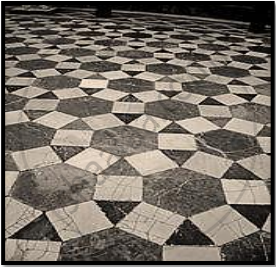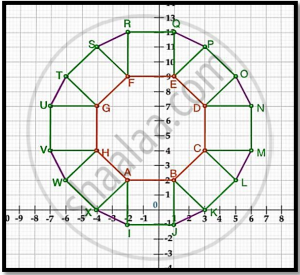Advertisements
Advertisements
प्रश्न
Show hat A(1,2), B(4,3),C(6,6) and D(3,5) are the vertices of a parallelogram. Show that ABCD is not rectangle.
उत्तर
The given vertices are A(1,2), B(4,3),C(6,6) and D(3,5) .
`AB = sqrt((1-4)^2+(2-3)^2) = sqrt((-3)^2 +(-1)^2) `
`= sqrt(9+1) = sqrt(10) `
`BC = sqrt((4-6)^2 +(3-6)^2) = sqrt((-2)^2 +(-3)^2)`
`= sqrt(4+9) = sqrt(13)`
`CD = sqrt((6-3) ^2 +(6-5)^2) = sqrt((3)^2 +(1)^2) `
`= sqrt(9+1) = sqrt(10)`
`AD = sqrt((1-3)^2 +(2-5)^2 ) = sqrt((-2)^2 +(-3)^2)`
`= sqrt(4+9) = sqrt(13) `
`∵ AB = CD = sqrt(10) " units and" BC= AD = sqrt(13) units `
Therefore, ABCD is a parallelogram
`AC = sqrt((1-6)^2 +(2-6)^2 )= sqrt((-5)^2 +(-4)^2)`
`= sqrt(25+16) = sqrt(41) `
`BD = sqrt((4-3)^2 +(3-5)^2 ) = sqrt((1)^2 +(-2)^2) `
`= sqrt(1+4) = sqrt(5) `
Thus, the diagonal AC and BD are not equal and hence ABCD is not a rectangle
APPEARS IN
संबंधित प्रश्न
Find the distance between the following pair of points:
(a, 0) and (0, b)
Find the co-ordinates of the point equidistant from three given points A(5,3), B(5, -5) and C(1,- 5).
If the point A (4,3) and B ( x,5) lies on a circle with the centre o (2,3) . Find the value of x.
Show that the following points are the vertices of a square:
(i) A (3,2), B(0,5), C(-3,2) and D(0,-1)
Find the coordinates of the midpoints of the line segment joining
A(3,0) and B(-5, 4)
In what ratio does the line x - y - 2 = 0 divide the line segment joining the points A (3, 1) and B (8, 9)?
Find the area of quadrilateral ABCD whose vertices are A(-5, 7), B(-4, -5) C(-1,-6) and D(4,5)
Find the point on x-axis which is equidistant from points A(-1,0) and B(5,0)
Mark the correct alternative in each of the following:
The point of intersect of the coordinate axes is
Show that the points (−4, −1), (−2, −4) (4, 0) and (2, 3) are the vertices points of a rectangle.
Find the value(s) of k for which the points (3k − 1, k − 2), (k, k − 7) and (k − 1, −k − 2) are collinear.
Write the X-coordinate and Y-coordinate of point P(– 5, 4)
The distance of the point P(2, 3) from the x-axis is ______.
Abscissa of all the points on the x-axis is ______.
A point both of whose coordinates are negative will lie in ______.
Point (3, 0) lies in the first quadrant.
A tiling or tessellation of a flat surface is the covering of a plane using one or more geometric shapes, called tiles, with no overlaps and no gaps. Historically, tessellations were used in ancient Rome and in Islamic art. You may find tessellation patterns on floors, walls, paintings etc. Shown below is a tiled floor in the archaeological Museum of Seville, made using squares, triangles and hexagons.

A craftsman thought of making a floor pattern after being inspired by the above design. To ensure accuracy in his work, he made the pattern on the Cartesian plane. He used regular octagons, squares and triangles for his floor tessellation pattern

Use the above figure to answer the questions that follow:
- What is the length of the line segment joining points B and F?
- The centre ‘Z’ of the figure will be the point of intersection of the diagonals of quadrilateral WXOP. Then what are the coordinates of Z?
- What are the coordinates of the point on y-axis equidistant from A and G?
OR
What is the area of Trapezium AFGH?
Assertion (A): The point (0, 4) lies on y-axis.
Reason (R): The x-coordinate of a point on y-axis is zero.
